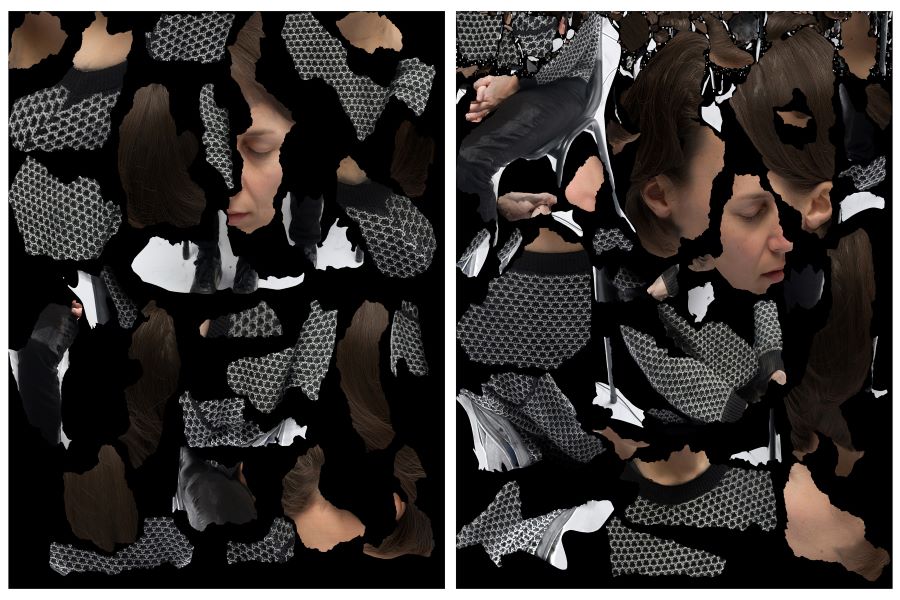Felstead’s interest in photogrammetry or three dimensional printing is apparent as it concerns mapping the empathic rather than calculating the quantifiable; the felt as opposed to the length, breadth and height.
Jacqueline Felstead
Jacqueline Felstead is a photo-media artist working with digital and experimental formats. Her work to date has explored a range of photographic processes including daguerreotypes, 3D printing, and animation. In a series of daguerreotypes made in 2005 during her Banff residency, Felstead mines the history of photographic portraiture, not to laud its inventors but rather elevate its original sitters. As part of this series, Laura (2005) is Felstead’s reproduction of the first daguerreotype, made by American painter and inventor (co-developer of the Morse code) Samuel Morse (1791-1872). Here the eponymous Laura’s eyes are shut, replicating Morse’s original sitter, who would have been subjected to an extended, blinding flash. A historical curiosity, the daguerreotype is part of a linear narrative of technological advances rather than an art history of formal ones. In Morse’s portraits the subject is obscured by overexposure and also by historical account. Like a documentarian, Felstead reimagines the original subjects alongside their histories, their subjectivity, like their rendering, , “blurred, hidden, solarised and underexposed, withholding as much as it discloses.”
In the more recent 2014 series Gatwick Private Hotel, Felstead’s photographs further describe how the conceptual loop of the photographic process can operate as a haunting or a half-seeing. The Gatwick Hotel is a notorious boarding house in Melbourne’s St Kilda, home still to a Dickensian cohort of indigents and unfortunates: the down and out, the just released and the recovering. The building represents an underclass and, unjustly perhaps, as this series points to, a societal eyesore. The seen and the unseen are again central motifs of the work. Felstead’s disguise of the subjects speaks to the ways in which residents room there to ‘start again’ after a stint in jail, or after relocating from another city. Here the photographer re-casts them cloaked in bedsheets, ghosts of the hallways in purgatory, where some of them will remain.
On screen, in print and in life, we examine faces for feeling. The expanded portraits of Iris, Kim, Matt, Mifumi from the series On loss in a simulated environment (2016) are a result of photographing a sitter for an extended period, incorporating minute movements - a blink , a swallow, hands fidgeting - capturing as full a sense of them as possible and rendering it in three dimensions. Felstead maps the way that time is concealed in the object and revealed on the face. Tracing a line from Platonic ‘thingness of things’ to Kosuth's’ ‘chairness’, we can read Felstead’s interest in the visual gap between object and meaning-making.
In On loss in a simulated environment Felstead’s interest in photogrammetry or three dimensional printing is apparent as it concerns mapping the empathic rather than calculating the quantifiable; the felt as opposed to the length, breadth and height. In multiple ways photography is always attempting this diagram, not simply fixing on and capturing an image, but a moment, a personality, an event, a feeling and more.
Felstead holds a Masters of Fine Art, Bachelor degrees with honours in Media Art and Social Science, and is currently completing her PhD at Victorian College of the Arts. Felstead undertook an Asialink Residency to Objectif's, Singapore with the support of the Australia Council in 2009 and in 2005 she completed a studio residency to Banff Centre, Canada.
Text by Amita Kirpalani, a Melbourne-based writer.
Jacqueline Felstead is currently attending the Royal College of the Arts, London.
Artist's website: www.jacquelinefelstead.com

